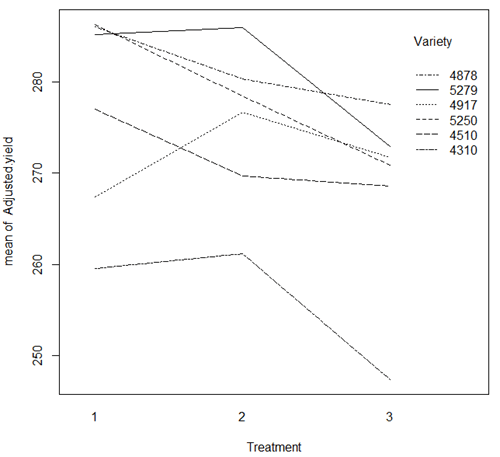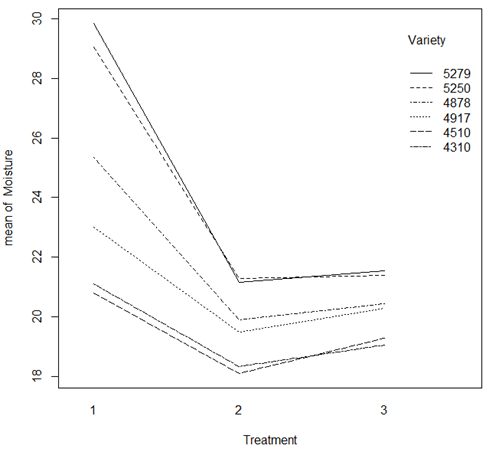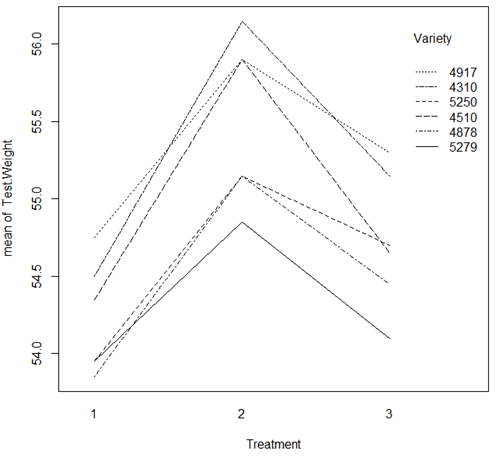Product and Agronomy Research (PAR) Results: First in a Series of Three
BY Dairyland Seed Agronomy Team
For the next three weeks, our agronomy newsletters will highlight one of the trials conducted through our Product and Agronomy Research (PAR) trials. This week we are sharing the details of the Date of Harvest study in Wabash, IN.
WABASH, IN, CORN HARVEST DATE/ PHANTOM YIELD LOSS
DESCRIPTION:
University and other studies have shown that optimum harvest moisture is 25%, because of this information there has been a lot of interest in looking at harvest moisture and timing, and the impact on yield. Harvesting at a higher moisture has shown to reduce mechanical damage and loss. The grain yield lost between an earlier harvest and allowing the corn to field dry is often referred to as phantom yield loss. The hybrids used range from 103 day to 112 day in maturity (DS-4310Q™, DS-4510Q™, DS-4878Q™, DS-4917AM™, DS-5250AM™, DS-5279Q™). This trial was plated on May 21 at a population of 33.600 seeds per acre.
TREATMENTS:
A sample of each hybrid was harvested on the following dates:
- October 2, 2021
- October 10, 2021
- October 14, 2021




CONCLUSION:
- This year did show that the early harvest or treatments 1 and 2, did significantly help to retain yield as compared to treatment 3.
- The Harvest moistures of treatments 2 and 3 did have statistical differences from treatment 1 as shown in Table 1 and displayed in the Treatment x Mean of Moisture graph.
- Test weights of all 3 treatments were statistically different as shown in Table 1 and displayed in the Treatment x Mean of Moisture graph.
The range in maturities of the hybrids used in this study allows us to look at the impact of early harvest on a large scale. Early harvest (treatment 1) did show an 8.8 bushel increase over the later harvest (treatment 3). The retention in dry matter from earlier harvest this year may have been caused by the rapid drydown during the period following the first harvest. A later 3rd harvest date was planned but the onset of stalk lodging issues experienced across the area forced an earlier than scheduled 3rd treatment. Test weight decreases between the 2nd and 3rd harvest as well, this is likely due to the late season infection tar spot in the corn.
 |
 |
 |
 |
 |
| Brian Weller Western Region 507.456.3034 |
Dan Ritter Central Region 219.863.0583 |
Branden Furseth Northern Region 608.513.4265 |
Mark Gibson Eastern Region 260.330.8968 |
Amanda Goffnett Eastern Region 989.400.3793 |
